
Clifford Benjamin Brown was an American jazz trumpeter, pianist and composer. He died at the age of 25 in a car crash, leaving behind four years' worth of recordings. His compositions "Sandu", "Joy Spring", and "Daahoud" have become jazz standards. Brown won the DownBeat magazine Critics' Poll for New Star of the Year in 1954; he was inducted into the DownBeat Hall of Fame in 1972.

Callen Radcliffe Tjader Jr. was an American Latin Jazz musician, often described as the most successful non-Latino Latin musician. He explored other jazz idioms, especially small group modern jazz, even as he continued to perform music of Africa, the Caribbean and Latin America.
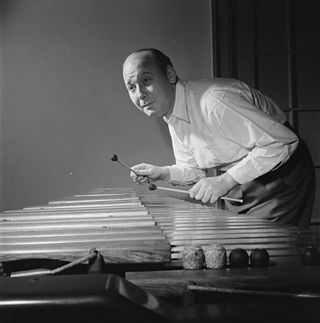
Red Norvo was an American musician, one of jazz's early vibraphonists, known as "Mr. Swing". He helped establish the xylophone, marimba, and vibraphone as jazz instruments. His recordings included "Dance of the Octopus", "Bughouse", "Knockin' on Wood", "Congo Blues", and "Hole in the Wall".

Sir George Albert Shearing was a British jazz pianist who for many years led a popular jazz group that recorded for Discovery Records, MGM Records and Capitol Records. Shearing was the composer of over 300 songs, including the jazz standards "Lullaby of Birdland" and "Conception", and had multiple albums on the Billboard charts during the 1950s, 1960s, 1980s and 1990s.

Leon "Lee" Konitz was an American jazz alto saxophonist and composer.

Leonard Joseph Tristano was an American jazz pianist, composer, arranger, and teacher of jazz improvisation.

Jazz at Massey Hall is a live jazz album recorded on 15 May 1953 at Massey Hall in Toronto, Canada. Credited to "the Quintet", the group was composed of five leading "modern" players of the day: Dizzy Gillespie, Charlie Parker, Bud Powell, Charles Mingus, and Max Roach. It was the only time that the five musicians recorded together as a unit, and it was the last recorded meeting of Parker and Gillespie.
Marjorie Hyams was an American jazz vibraphonist, pianist, and arranger. She began her career as a vibraphonist in the 1940s, playing with Woody Herman, the Hip Chicks (1945), Mary Lou Williams (1946), Charlie Ventura (1946), George Shearing, and led her own groups, including a trio, which stayed together from 1945 to 1948, performing on 52nd Street in Manhattan. The media, marquees, and promos often spelled her first name "Margie", but she insisted that it was spelled with a "j".
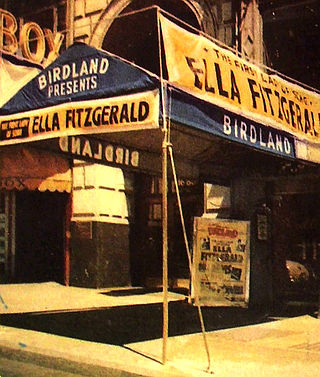
Birdland is a jazz club started in New York City on December 15, 1949. The original Birdland, which was located at 1678 Broadway, just north of West 52nd Street in Manhattan, was closed in 1965 due to increased rents, but it re-opened for one night in 1979. A revival began in 1986 with the opening of the second nightclub by the same name that is now located in Manhattan's Theater District, not far from the original nightclub's location. The current location is in the same building as the previous headquarters of The New York Observer.
James Elbert Raney was an American jazz guitarist, born in Louisville, Kentucky, United States, known for his work from 1951 to 1952 and then from 1953 to 1954 with the Red Norvo trio and, during the same time period, with Stan Getz. In 1954 and 1955, he won the DownBeat Critics' Poll for guitar. Raney worked in a variety of jazz mediums, including cool jazz, bebop, post bop, hard bop, and mainstream jazz.

A jazz trio is a group of three jazz musicians, often a piano trio comprising a pianist, a double bass player and a drummer. Jazz trios are commonly named after their leader, such as the Bill Evans Trio.
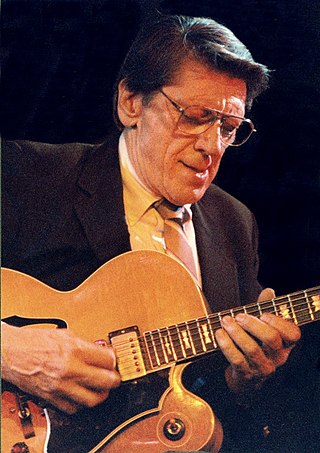
Talmage Holt Farlow was an American jazz guitarist. He was nicknamed "Octopus" because of how his large, quick hands spread over the fretboard.
The Metronome All-Stars were a collection of jazz musicians assembled for studio recordings by Metronome Magazine, based on its readers' polls. The studio sessions were held in the years 1939–42, 1946–53, and 1956, and typically consisted of two tracks which allowed each participant a chance to solo for one chorus. Earlier recordings feature more swing style, while the later sessions tend more toward bebop.

By the end of the 1940s, the nervous energy and tension of bebop was replaced with a tendency towards calm and smoothness, with the sounds of cool jazz, which favoured long, linear melodic lines. It emerged in New York City, as a result of the mixture of the styles of predominantly white swing jazz musicians and predominantly black bebop musicians, and it dominated jazz in the first half of the 1950s. The starting point were a series of singles on Capitol Records in 1949 and 1950 of a nonet led by trumpeter Miles Davis, collected and released first on a ten-inch and later a twelve-inch as the Birth of the Cool. Cool jazz recordings by Chet Baker, Dave Brubeck, Bill Evans, Gil Evans, Stan Getz and the Modern Jazz Quartet usually have a "lighter" sound which avoided the aggressive tempos and harmonic abstraction of bebop. Cool jazz later became strongly identified with the West Coast jazz scene, but also had a particular resonance in Europe, especially Scandinavia, with emergence of such major figures as baritone saxophonist Lars Gullin and pianist Bengt Hallberg. The theoretical underpinnings of cool jazz were set out by the blind Chicago pianist Lennie Tristano, and its influence stretches into such later developments as Bossa nova, modal jazz, and even free jazz. See also the list of cool jazz and West Coast musicians for further detail.
"Intuition" is the title of a free improvisation by the Lennie Tristano quintet. It was recorded on May 16, 1949, and is credited as being one of the first two freely improvised jazz recordings, along with "Digression".
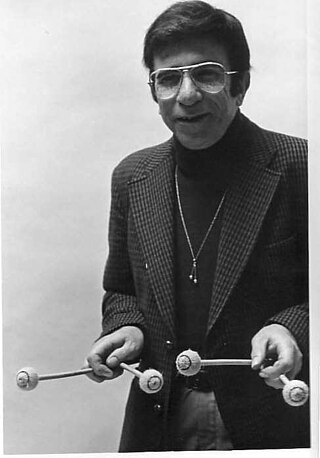
Ray Alexander was a jazz drummer and vibraphonist. He is best known for his work with George Shearing and Peggy Lee on Beauty And The Beat (1959), Quiet Village (1959), Cloud Patterns (1988), Rain In June (1993), and Vigorous Vibes (1998).
Jimmy Halperin is an American saxophonist and composer in avant-garde jazz and new improvised music.
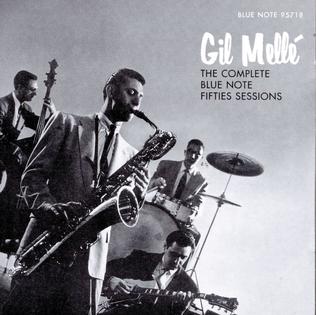
The Complete Blue Note Fifties Sessions is a compilatation of saxophonist, composer and bandleader Gil Mellé's recordings from 1952 to 1956 which were released on the Blue Note label. They were originally released as four 10 inch LPs; Gil Mellé Quintet/Sextet ; Gil Mellé Quintet with Urbie Green and Tal Farlow; Gil Mellé Quartet featuring Lou Mecca; 5 Impressions of Color; and a 12 inch LP Patterns in Jazz.
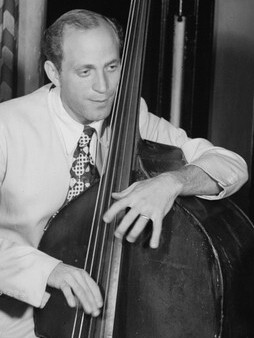
Claudio "Clyde" Lombardi was an American jazz double bassist.














